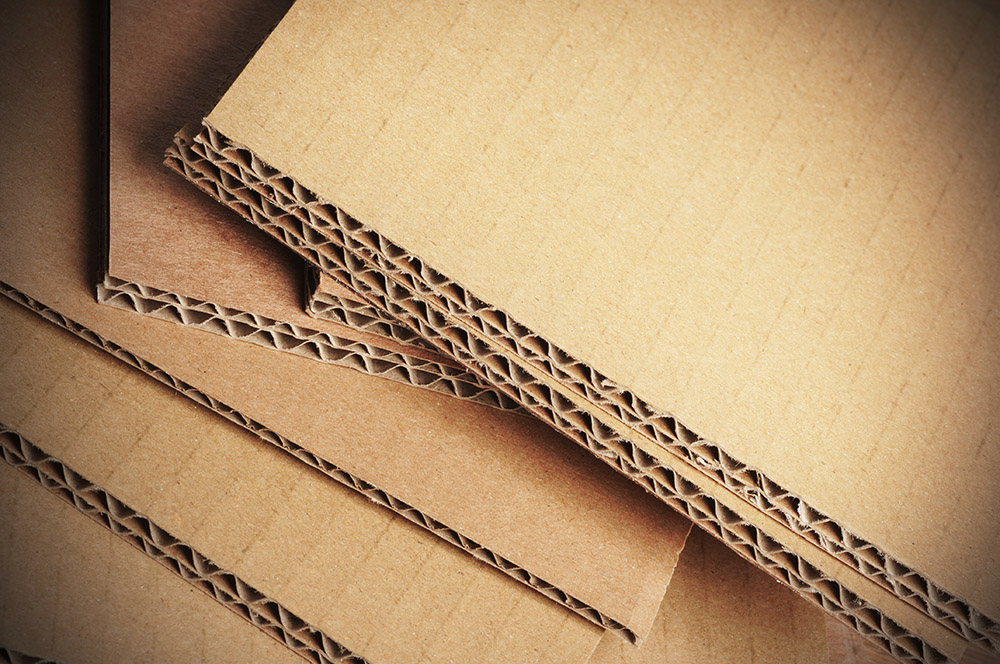
When ordering custom made shipping boxes to transport products to customers, many businesses initially assume that all boxes are merely made of cardboard. And if they have heard of corrugated, business owners might think there is no real difference between a cardboard and a corrugated shipping box. In fact, many people just assume that the terms “cardboard,” “corrugated,” and even “rigid setup boxes” can be used interchangeably.
Those in the packaging industry, however, likely think of corrugated boxes first when they think of shipping packages. If you’re confused with all this terminology, you’re not alone, but the difference is actually quite important.
Keep reading to learn more about the difference between these two materials and decide which is right for your shipping needs.
Cardboard is a thick paper stock used for items like cereal boxes. It is a single layer and not very durable for shipping. Corrugated material comprises multiple layers: two flat liners with a fluted layer in between. This construction provides greater strength and durability, making it ideal for shipping and packaging.
To put it simply, the major differences between cardboard vs. corrugated boxes focus on:
When it comes down to it, the term “cardboard” can be used to describe any type of board made from heavy paper-pulp. This could apply to the material used to make greeting cards or playing cards, for example. It could also apply to the thin chipboard that is used to manufacture cereal boxes. While corrugated materials may include some cardboard in them, it’s important to know that these terms cannot be used interchangeably.
Rigid setup boxes are ideal for luxury products and gifts. They offer superior protection and a premium unboxing experience, making them perfect for electronics and specialty foods.
So, for a business owner or manager, does the difference between cardboard and corrugated shipping materials really matter? Considering that these are two different materials, and not the same thing as many people believe, it clearly does matter. When choosing the right materials to ship your products in, you need to know what kind of packaging you’re actually getting. Otherwise, you may not be representing your brand as well as you think you are.
The term “corrugated” refers to a specific type of material that is actually composed of three different sheets of container board, which are basically like thick paperboard. The two sheets on the outside are flat liners and the sheet in the middle has a rippled shape. A corrugated fiberboard sheet is created by gluing these three sheets together with a thick, starchy glue that is commonly used in the packaging industry.
When formed into boxes, corrugated sheets are ideal for shipping because they can easily be printed on, they are very strong and durable, and they are widely recycled. Corrugated boxes are used for everything from shipping to product displays, and although they start out brown they can be quickly be transformed with a wide variety of colors, designs, text, and graphics printed directly on the material.
While the differences may seem insignificant at first, it should now be easy to see that cardboard is better left for the cards and cereal boxes. Corrugated cardboard, on the other hand, is the material of choice for shipping boxes. It isn’t an overly complicated definition, but an important one to remember when it comes time to order custom made shipping boxes. Just don’t ever think a simple cardboard box is enough to ship your precious products in. For such an important task, you must always remember to turn to corrugated.
Now that you understand the differences between a corrugated box vs. a cardboard box, let’s take a look at the benefits of each. Both corrugated and cardboard are useful for many applications. When it comes to shipping, however, corrugated is the clear choice. Explore the benefits of corrugated and cardboard boxes and when to use each style.
The benefits of corrugated packaging include:
Cardboard boxes are also a useful packaging option. While not ideal for shipping, cardboard boxes offer maximum lightweight efficiency when packaging very thin or light items. For example, they can be used to mail small items that require more padding than an envelope but don’t need the strength of a corrugated box. In this situation, choosing cardboard can help you cut down on costs and bulk. Cardboard boxes can also be used as inserts to help keep clothing or other light items folded correctly during shipping.
Ready to create your own custom corrugated cardboard box?
Since both cardboard and corrugated boxes can be used for packaging, how do you decide which box style to use? Typically, you’ll want to use corrugated and cardboard for the following applications.
Use standard cardboard shipping boxes for:
Keep in mind that cardboard is not recommended for shipping, as it does not offer the level of protection and durability needed to keep your items safe.
Note: Food-safe primary packaging should be used so that it does not come in direct contact with the corrugated shipping box.
Use customizable corrugated mailer boxes to package: